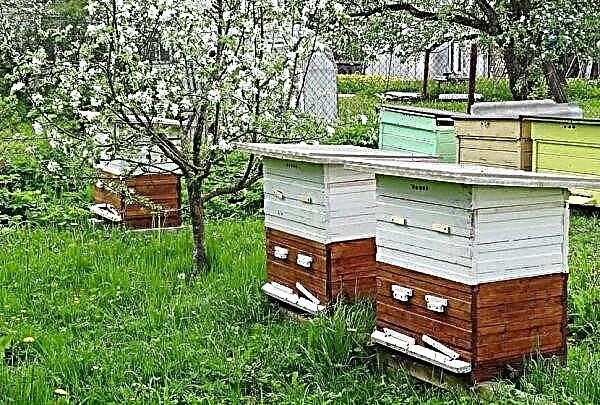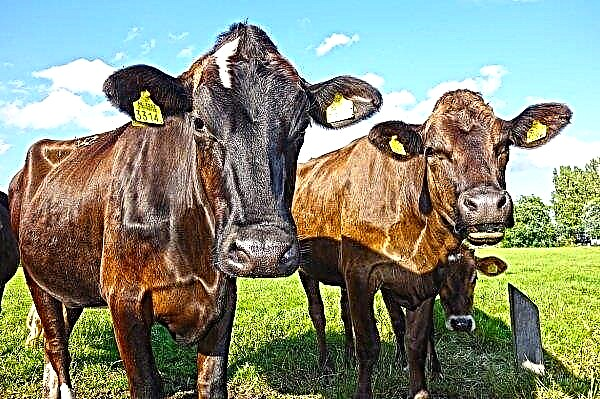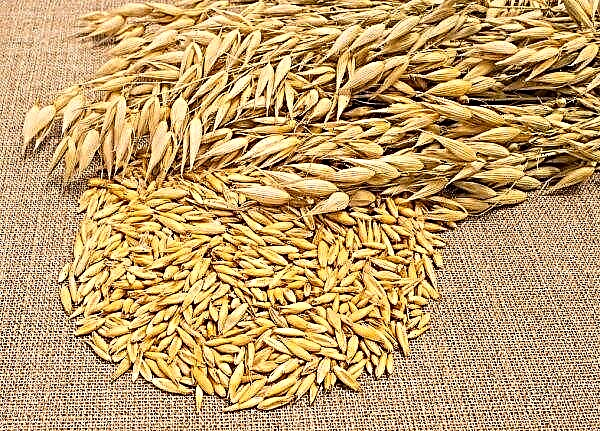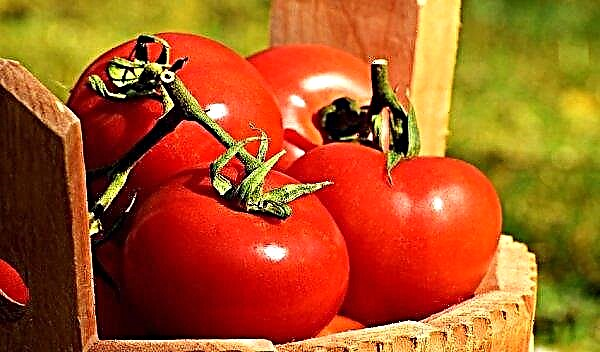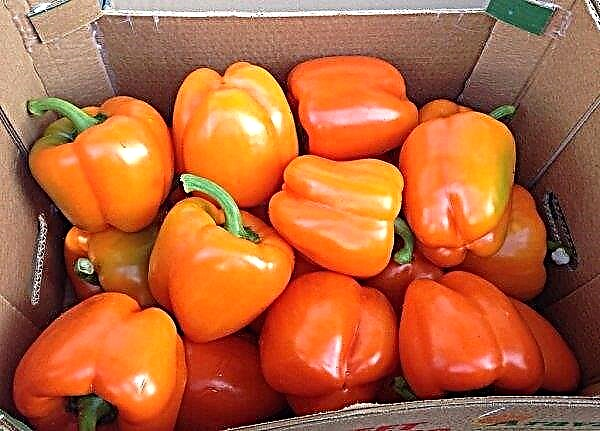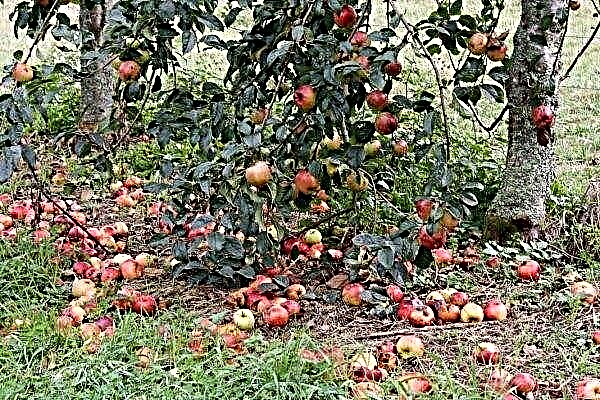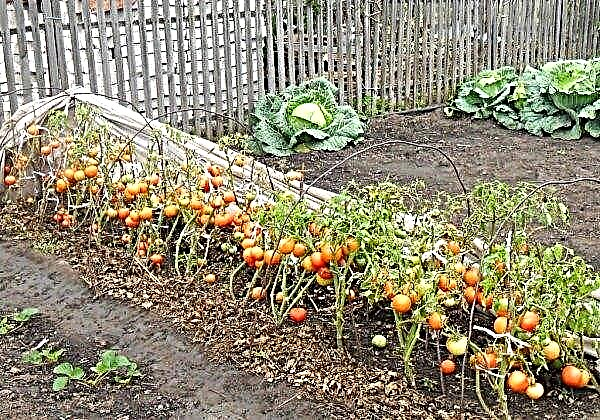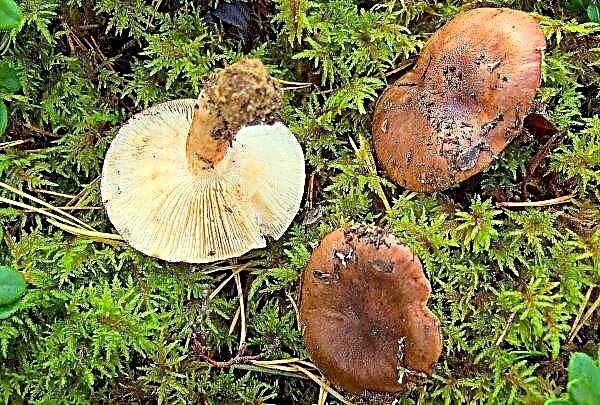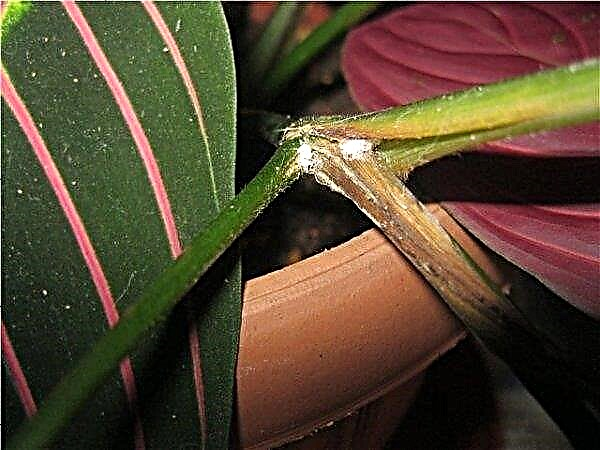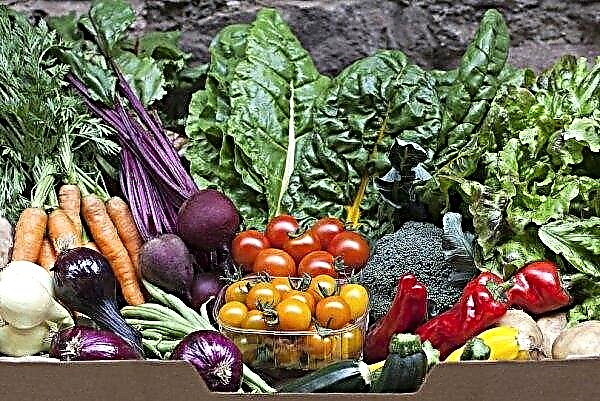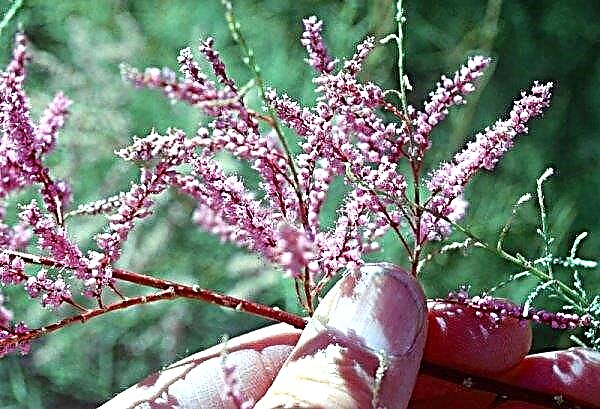Tomato is one of the most common garden crops. Each gardener is looking for the best variety in terms of yield and taste, not capricious in care. One of these varieties is Gin Tomato.
Grade description
Gina is the result of the work of Dutch breeders. The variety was recently bred, but thanks to its yield indicators and other advantages, it managed to gain popularity among vegetable growers. Main characteristics:
- crop height - up to 60 cm, determinant variety;
- the bush grows in three stems, medium leaf. Medium sized leaf plates, carved, light green;
- fruits are large, rounded in shape, with weakly pronounced ribs, bright red in color, contain from 6 to 8 chambers with seeds. With good care, they can weigh up to 400 g;
- the pulp is juicy, sweet-sour taste, covered with a dense skin;
- inflorescences form over 8–9 leaves;
- ripening occurs in 110-120 days, in the greenhouse can be grown all year round;
- high productivity, it is possible to collect more than 20 kg per square meter with good care;
- cultivation methods - in a greenhouse, on open ground, a seedling method is possible in regions with a warm and mild climate;
- the culture is resistant to viral diseases, root rot, verticillosis, late blight, fusariosis;
- seeds collected from fruits are suitable for sowing;
- the fruits are consumed fresh, canned for the winter mainly in salads, fermented in barrels, pickling whole in jars is not convenient due to the large size.

Advantages and disadvantages
Gina Tomato has many positive characteristics.
- Among the advantages of the variety:
- high productivity;
- long fruiting period;
- resistance to the main diseases of solanaceous crops;
- good transportability;
- the culture does not require pinching, bush formation;
- excellent taste;
- varietal tomato: its seeds are used for planting.
- Some cons of the variety are also noted:
- thermophilic culture: sharply reacts to temperature changes;
- oversized sizes are not always suitable for canning;
- Despite good immunity, it is attacked by insects.
How to grow tomato seedlings yourself
In regions with a warm climate and mild winters, the plant can be grown bypassing the seedling stage, sowing directly into the ground. For other climatic conditions, preference is given to seedling cultivation method.
Did you know? Wild tomatoes are still found in the forests of South America, the fruits of which weigh about 1 gram.
Optimum timing for sowing
If you plan to grow in a greenhouse, then sowing seeds is carried out in late February. For outdoor cultivation, sowing seedlings is recommended in early April.
The soil
To germinate seedlings, you need to prepare light soil with good moisture permeability and friability. For the composition, several components are taken:
- turf land - 2 parts;
- peat - 1 part;
- humus - 0, 5 parts;
- sand - 1 part.
Important! Please note that when calcining, the soil should be sieved and moistened, the temperature in the oven should not exceed +90 ° C, and the time should be 30 minutes.
Capacity for growing
For germinating seedlings, wooden crates and elongated, rectangular containers are suitable. At the bottom, you must definitely make holes for the drainage of moisture and lay down the drainage (fine gravel).
Seed preparation
Before the process, the seeds are soaked in a weak pink solution of potassium permanganate for 2 hours. Pop-up dummies are removed. The remaining material is treated with Epin for better germination.
Sowing seeds
Sowing is carried out in slightly moistened soil. Sowing scheme:
- distance from each other - 2-3 cm;
- depth - 0.5 cm;
- the soil should be 2 cm below the top edge of the box;
- the crop is sprayed from the spray gun;
- cover with a film.

Seedling Care
Immediately after sowing, a high temperature of +25 ... + 28 ° С is provided. After emergence, the film is removed. Daylight may not be enough, so you need to provide additional (phytolamps). Daylight hours for crops should last up to 14 hours.
Sprouts are irrigated as the earth dries in a box. Every twice fed with nitrogen-containing compounds. The first fertilizer - 14 days after sowing, the second - another 14 days later. A good complex suitable for tomatoes is Agricola, you can use a urea solution in a proportion of 1 tbsp. l substances per 10 liters of water. In individual containers, the bushes are transplanted in the presence of 5-6 leaves.
Important! Bad predecessors for the culture are other plants of the nightshade family, as they are susceptible to the same diseases.
Seedling hardening
One and a half weeks before transplanting seedlings should undergo a hardening procedure. A box with plants is taken out to fresh air for 1-2 hours. Gradually, the time of “walk” is increased, 2-3 days before transplanting, the seedlings should calmly “feel” in the air and at night.
Planting seedlings in a permanent place
The transplant is carried out approximately 45-50 days after sowing. The site is dug up and saturated with potassium-phosphorus fertilizers with the addition of wood ash. The place for the tomato should be protected from drafts, lit.
They dig holes for planting, focusing on the size of the root system. Before planting, they are shed with settled water. Landing pattern:
- the distance between the bushes is up to 50 cm;
- distance between rows - up to 70 cm;
- depth - to cotyledon leaves.

How to care in the open ground
Caring for a crop is not difficult. It is advisable to pinch off the lower leaves as the bush grows, which, when in contact with the soil, can rot or be affected by bacteria.
Watering
Plants are watered under the root 2 times a week to 2 liters per bush. Use water at room temperature, defended, better collected rainwater. In strong heat, watering is carried out more often, while remembering that moisture on the foliage evaporates and leaves a burn. It is better to water in the evening when the sun is not so active.
Important! Fresh tomato droppings or manure are not made under the tomato. Such a land is oversaturated with nitrogen, all the power of the plant will go into the growth of foliage, restraining fruiting.
Top dressing
During the period of active growth, plants are fed with nitrogen fertilizers. Most commonly used:
- ammonium nitrate;
- urea
- herbal infusion.
It is enough to pour 0.5 l of fertilizer under the root, dilute the active substance with water 10–20 g per 10 l. With the onset of ovary formation and during flowering and fruiting, plants need potassium and phosphorus. During flowering, feeding with azophos is recommended, and during fruiting - with a mixture of 10 liters of water:
- potassium sulfate — 15 g;
- superphosphate - 15 g;
- urea - 10 g.
 Feed rate:
Feed rate:a) vegetative period:
- the first - 2 weeks after planting;
- the second - after 10 days;
- the third - after 2 weeks;
- the first - during the formation of ovaries;
- the second - after 2 weeks.
Stepson
Culture does not need pinching, the only thing that can be done to prevent disease is to regularly pick off the lower leaves. There is also no need to form a trunk, since the plant forms in three stems independently.
Did you know? Tomato is used not only for food. In the production of some perfumes, the aroma of plant foliage is added to bouquets.
Soil care
The roots need access of oxygen, so they regularly cultivate the soil. In order for the plants to get enough moisture and nutrients, weeds must be removed. If the gardener does not have enough time for regular watering, you can cover the soil with mulch. The benefits of this procedure:
- keep moisture;
- inhibits weed growth;
- prevent overheating of the roots.
- peat;
- sawdust;
- the straw.

Bush tying
Gina Tomato is a large-fruited crop; stems can break under the weight of the fruit. To prevent this, the plants are tied up. Since the variety is undersized, the garter is carried out at the stage of fruit formation, under the fruiting branch. To do this, establish an individual support (wooden peg) and tie it up with thin twine.
Preventative treatment
The culture is resistant to many diseases, including viral ones. But there are still cases of damage, as well as attacks by insect pests. Basic preventive measures:
- Compliance with crop rotation.
- Cleaning the site before landing.
- Seed disinfection for seedlings and seed treatment.
- 3 weeks after transplanting into the open ground, the culture is watered with garlic infusion.
- During the flowering period, they are treated with infusion of calcium nitrate - 1 tbsp. l. / 10 l of water.
- After harvesting, the soil is sprayed with an aqueous solution of copper sulfate in a proportion of 10 l / 200 g.
- Insects are often attracted by acidic soil, in order to avoid this, the soil is lime.
- To scare away pests and their larvae, the soil is covered with mulch, mixing Bazudin in its composition.
- At the edge of the plot and between the rows, repellent plants are planted that repel insects. When pests appear, the bushes are sprayed with a decoction of these plants.

Plants repellents:
- marigold;
- nasturtium;
- tansy;
- sagebrush;
- tobacco.
Harvesting
The fruiting of Gina is stretched, the fruits can be harvested until late autumn. Collect every 3-5 days. If there is a long transportation, the fruits are removed in a state of ripeness ripeness. In the boxes stack the stalk up. For a week in a dark and dry place at room temperature they will fully mature.
For long-term storage, the fetus is removed along with the stem. The box is stacked by layering with dry sawdust. Store vegetables in a cool, dry cellar or cellar. Gina is considered the best variety of European selection. The variety has many advantages, including resistance to disease. The tomato is versatile in culinary applications.

